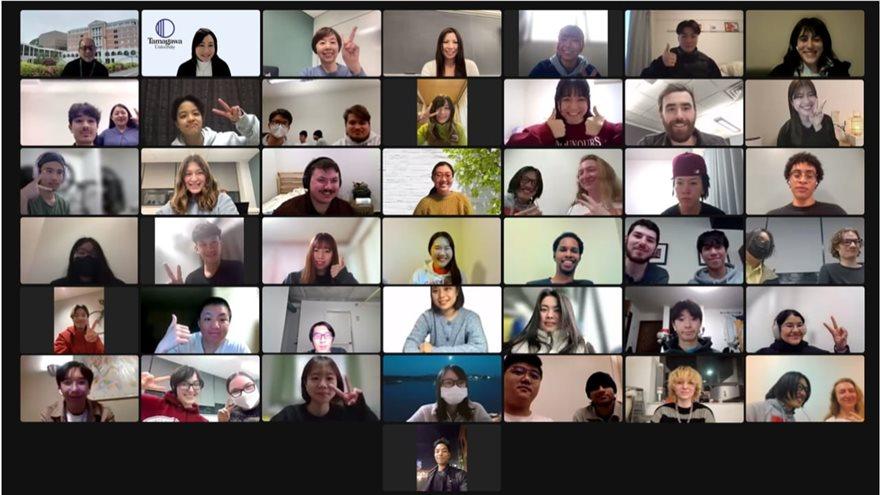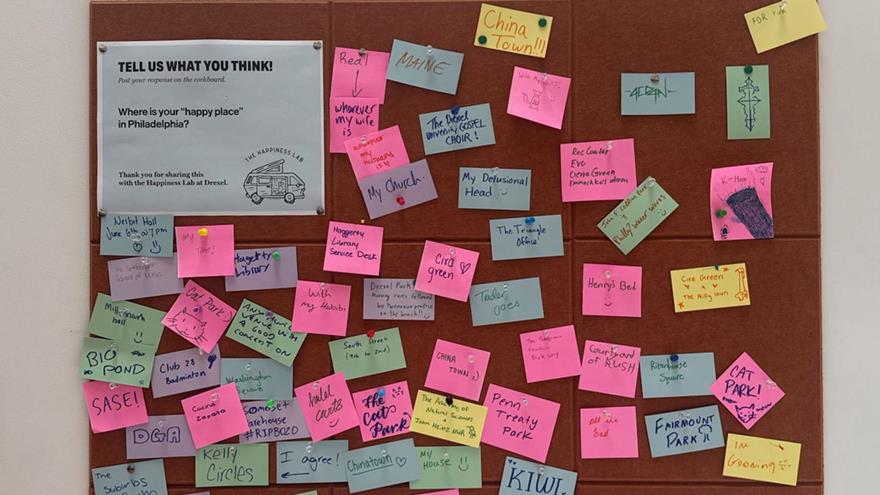Drexel University, Tamagawa University Students Learn From Each Other From Afar

“One of my most memorable experiences in a Japanese class was with another student who was studying education at Tamagawa University in Japan, and she saw an opportunity to try tutoring students,” said Ricky Taing, a Drexel University senior computer science major with a minor in Japanese. “On our side, we wanted to learn more Japanese, so while she got to practice her teaching skills, we got to learn Japanese.”
Thanks to the Drexel Japanese program’s unique global programming, students in Philadelphia and Tokyo have been able to connect across continents to build friendships and knowledge.
Drexel students in the Japanese program have an exchange twice a year with students from Tamagawa University in Tokyo, one to establish connections and have a freewheeling conversation about a general topic in Japanese, and another with a more structured dialogue about a certain topic.
Natalie Hiratsuka, assistant teaching professor of Japanese, and Hiromi Koyama, program lead and instructor of Japanese, often lead the exchanges. Koyama has been at Drexel for 20 years and has seen the Japanese program grow into a robust minor. Enthusiasm for classes runs high and is often passed between students through word-of-mouth, or through students who join the Japanese Undergraduate Student Association. Another unique aspect of the program is that the Drexel Japanese program uses a textbook that allows students to start having conversations in Japanese quickly.
“Usually, language textbooks start out with just nouns, but for us it’s a completely different approach,” Hiratsuka said. “We start with verbs and adjectives and in Japanese, there are no pronouns, so you don’t need to know all those details and you can start talking right away with things like, ‘Do you want to eat? Are you going tomorrow?’ and it feels good that you can quickly communicate that way.”
That quick route to communication comes in handy when it comes time to exchange across oceans.
The exchanges started in February of 2020 because the School of Education and the English Language Center had connections with Professor Chie Otani from Tamagawa University's School of Education. Several professors from the Tokyo university visited Drexel in Philadelphia, and Hiratsuka got connected with them through a meet-and-greet with the professors and Japanese students. From there, they agreed to meet with their students twice a year on Zoom.
In the first week, the two classes meet in a “global café” setting. There’s a topic to get everyone going on the dialogue, but no set guidelines. Ideally, it becomes a freewheeling discussion that mixes English and Japanese as students from Drexel and Tamagawa talk about their lives. Taing said that students bonded over Japanese anime, music, food and sports.
“There are many connections that I made through the café,” Taing said. "The topic is definitely a good thing because we all have something to talk about, but I think a lot of us want to bridge the gap further, so we all look forward to that time afterwards to just casually speak as well.”
The global café is open to anyone taking Japanese, but the "global classroom" that follows it is restricted to certain classes or levels.
“The global classroom is more structured, so we decide on certain levels, like 300-level classes one term,” Hiratsuka said. “We have a certain topic and theme and do a language exchange and have the students write an article about the experience.”
One term, Drexel students explained in Japanese how to set up a business meeting, from how to take calls to scheduling the meeting to how the interaction should go. Another term, students from the 100-level classes gave directions in Japanese about how to get around Philadelphia, including visiting City Hall and going to a restaurant. In turn, those students were given directions in English from the Tamagawa students about how to get around Tokyo. Yet another term, students discussed community-based learning and how to address trash and recycling and societal issues in both cities. Most recently, they discussed annual festivals and job-seeking tips, Koyama said. One student from each university act as discussion leaders and host the talks.
“I try to always get the contact information of a couple people after each meeting,” said Avery Deemer, a senior software engineer major with a minor in Japanese. “It’s nice to get to introduce each other during the café, but I do most of the actual talking to them afterwards. I got to host once, and I talked with the other Tamagawa student host for about 30 minutes. On top of that, I met one of my good friends through the cafe, who ended up transferring to Drexel from Tamagawa. We talked for months until she decided to come to Drexel, and we were able to meet in person, which was a cool experience.”
For Deemer, it’s been a confidence-builder in speaking the language, and he hopes to work in Japan after graduation. The immersion of the program and the strength of the connections to Japanese culture both through the classroom and through Drexel’s Japanese culture club, of which he is vice president, have created an experience that cultivates authenticity.
“It’s been great to create a community for people who are either learners of Japanese or are Japanese themselves or are just interested in the culture,” Deemer said.
In This Article
Drexel News is produced by
University Marketing and Communications.

